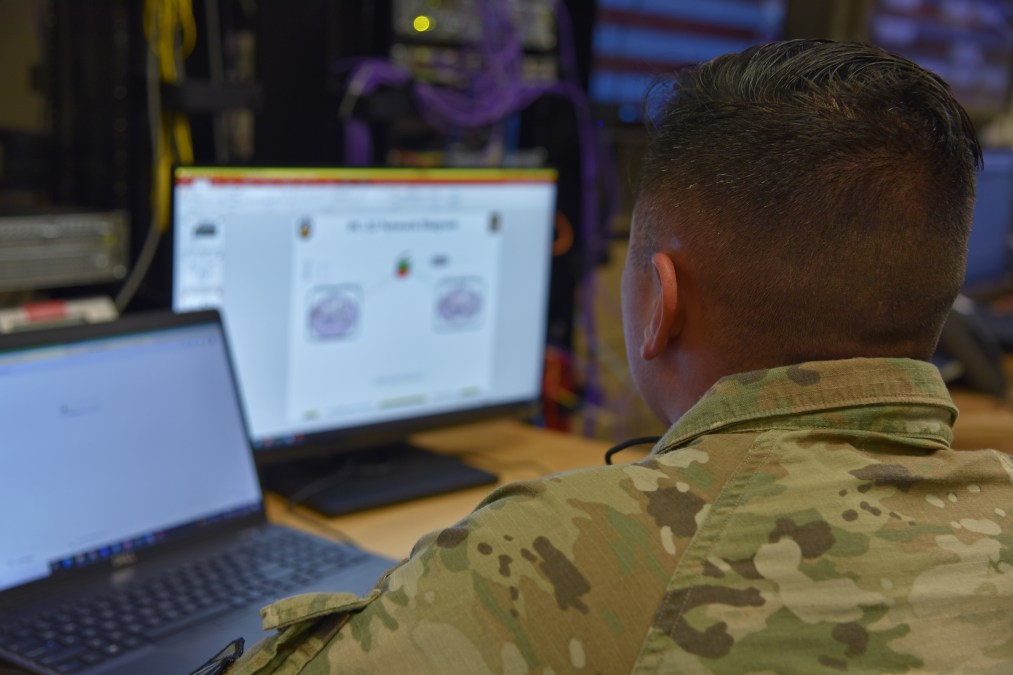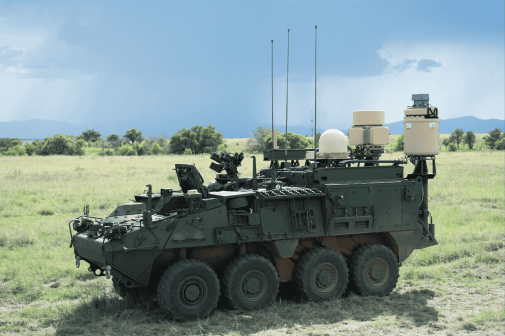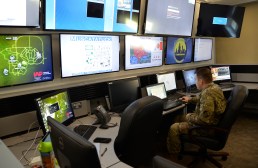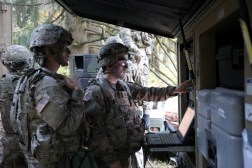The Army’s unified network concept is gaining momentum in 2023 capability builds

The Army is expecting to see progress in linking its enterprise network to tactical formations in upcoming tactical network capability sets.
The Army has adopted a multiyear strategy involving the incremental development and delivery of new capabilities to its integrated tactical network, involving a combination of program-of-record systems and commercial off-the-shelf tools. Those “capability sets” now provide technologies to units every two years, each building upon the previous delivery.
Capability Set 21 was primarily designed for infantry brigades, Capability Set 23 is focused on Stryker brigades, and Capability Set 25 is focused on armored brigades.
In October 2021, the Army released its unified network plan, which set forward a path for linking its enterprise and tactical network.
This is now beginning to materialize in the Capability Sets 23 and 25 builds, Army officials said during the Army’s eighth Technical Exchange Meeting in Philadelphia on May 10.
For the “unified network … I will submit to you that we are now actually executing along that line. Capability Sets 23 and 25 are really where you see that transition to go vertical,” Lt. Gen. John Morrison, the Army’s G-6, said a the meeting. “It is just a natural state of play as we mature the capabilities set construct.”
These meetings gather members of industry, the Army acquisition community, Army Futures Command and the operational community to outline priorities and capabilities to modernize the service’s tactical network.
Currently, there are too many tools on the network that aren’t integrated, interoperable or sustainable between the enterprise strategic network and the tactical network at the very edge. Leaders want to better connect these disparate systems to get to a truly singular unified network across the globe that will be centered around data and allow forces to have greater insights and visibility from theater to theater.
In previous examples, officials have cited issues in which units were not able to join the network immediately upon entering a theater — most recently during the withdrawal operations in Afghanistan —which creates big problems for the Army as it is trying to be more expeditionary.
Moreover, the Army is moving away from the brigade combat team-centric fight during the war on terror years that saw the brigade as the primary unit of action. Top nation-state powers that are more technologically sophisticated and transnational are forcing the Army to shift to higher echelons with the division as the unit of action.
“In a multi-domain fight, where our Army is heading, it will be a division and corps fight. Brigades will be maneuver elements,” Morrison said. “How do you maneuver a division network? How do you maneuver a corps network? How is it linked back to the enterprise so you can get to a strategic and operational effect at the point in time that a maneuver commander needs it anywhere on the battlefield.”
To this end, Morrison described moving network complexity higher up the chain, which will take the burden off those at the tactical edge and closer to the fight.
“If you buy into data centricity, and we all should, where do you place that complexity? You don’t place it at the lowest possible level. That’s not how industry does it; it’s not how the United States Army should do it,” he said. “We’ve got to work our way through how do we raise that complexity up to the appropriate echelon where people can deal with it, hence, this division- and corps-centric approach. We do need to be able to plug into whatever infrastructure is available, whether it’s commercial or military, do so securely and then reach back into that broader enterprise so that we can apply those strategic and operational effects to the point of need.”
Those effects could be long-range precision fires, cyber effects, some electronic warfare effects or deep sensing, Morrison said, adding that the Army of the future must be able to see something, feed it into the network and act on it in a timely manner.
These efforts are also about reducing complexity and allowing greater visibility into the network, both from a tactical level all the way up to the strategic perspective.
“From my perspective, at the operational level, I just want to be able to see my network, both the upper tactical and the lower tactical,” Maj. Todd Donaldson, the communications officer at 2nd Armored Brigade Combat Team, 3rd Infantry Division, said at the same conference. “I want to be able to see what’s on the network, what’s not on the network, if something starts to drift be able to pull it back in, see how much data we’re using and how congested that network might be at that time and how many users we have up on it.”
He added that as more capabilities are added to the network, such as radios and expanded mesh networking capabilities, he needs to be able to see everything to facilitate those capabilities and maneuver the network for the commander.
One area the Army is working on is trying to establish end-to-end capabilities for endpoint management from the highest strategic levels down to those tactical nodes. This will allow defenders and high-end cyber specialists to be able to see directly down into the tactical network from operations centers in the United States — or theoretically, anywhere in the world — and provide assistance and visibility like never before.
“It goes after this notion of unified net ops. The S6 at the edge, the person sitting in the regional cyber center and then all the way back to the Information Warfare Operations Center at [Army Cyber command] — common capabilities, common view. Now we can really work through who’s got to handle the most complex tasks,” Morrison told reporters on the sidelines of the conference. “We’ll be able to defend it much more effectively and that notion of being able to maneuver it because we have a common look and feel and we’ll be able to put that complexity where we want it to be. That way, folks that need to be able to do the higher-end DoDIN ops can concentrate on it. Communicators down at the edge that need to focus on maneuvering their formations and supporting those operations will be able to do that.”
Ahead of the efforts planned for Capability Set 23, the Army has begun moving personnel and resources to regional cyber centers, division headquarters and corps headquarters to enable a DoDIN operations framework from the enterprise to the tactical level, Morrison said.
This includes empowering newly created Expeditionary Signal Battalions-Enhanced, which support units that don’t have organic communications capabilities.
Morrison has also explained the need for local cyber defenders to up their game of securing, defending and operating the network to keep the high-end cyber protection teams doing what they do best, which is hunting on networks and being threat-focused.
Networking at the tactical edge
Ultimately, in the tactical sphere, the Army wants to reduce the network complexity and training burden for personnel.
In the immediate term, it is focusing on the lower tactical tier, for which the Army Requirements Oversight Council will sign out a requirements definition package later this year.
“We can focus on what planning, management, configuration, initialization, control and monitoring tools exist today, where can we gain some opportunities for optimization, what building blocks can we set the stage with for radio management,” Matt Maier, project manager for Interoperability, Integration and Services at Program Executive Office Command, Control, Communications-Tactical, said at the Technical Exchange Meeting. “Then we can start to migrate those capabilities up into the upper tactical tier and emerge and replace capabilities as capabilities come online.”
Capabilities in the lower and upper tactical tier aren’t well integrated like they are in the enterprise, he said. Notions such as identity management and zero trust don’t exist in the tactical space, which is something the Army is beginning to address.
The plan right now is to put several requests for information out to industry. Then, a draft request for proposals will be released in the third quarter of 2023 with contract awards scheduled for the second quarter of 2024, Maier said.






